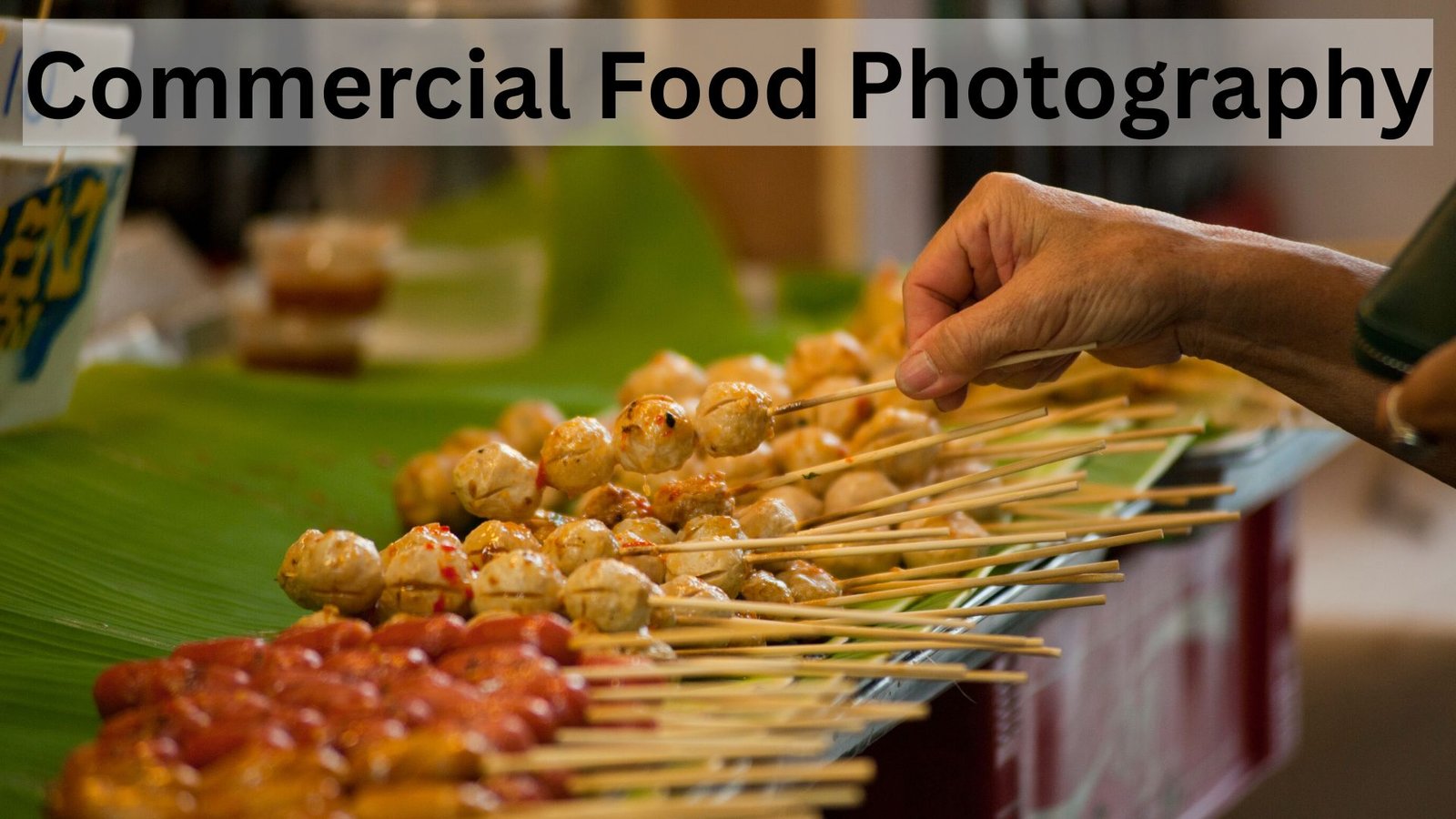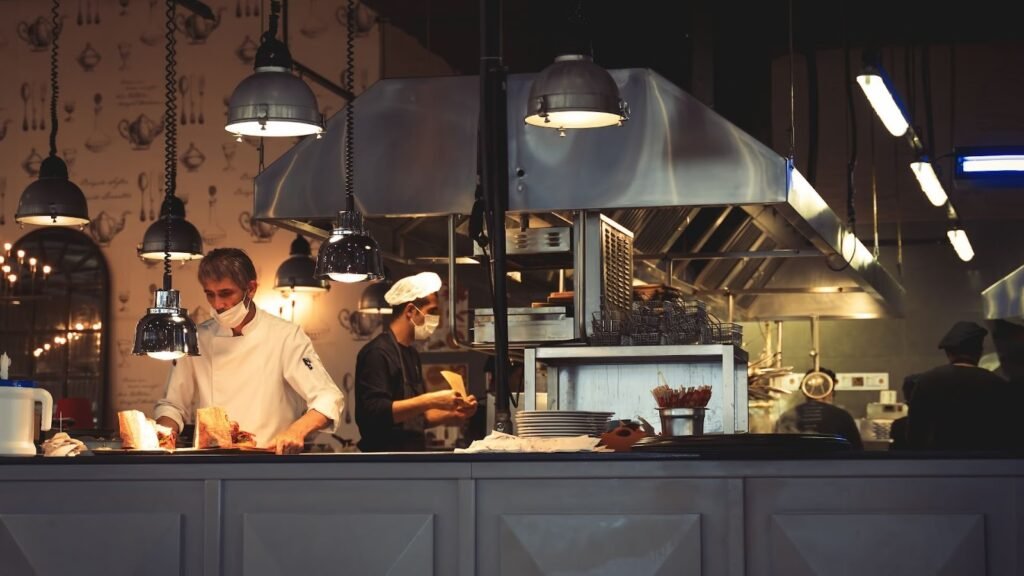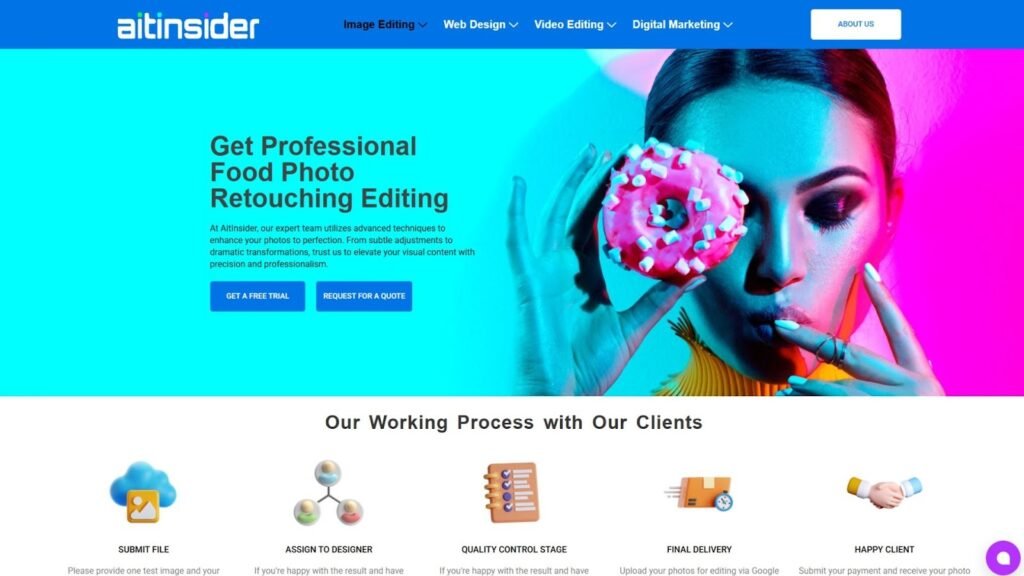
Mastering Commercial Food Photography: A Step-by-Step Guide for Businesses
If you run a restaurant, food brand, or catering business, you already know that first impressions matter. A great picture can turn a casual scroller into a paying customer. This guide will walk you through everything a business needs to master Commercial Food Photography – from planning a shoot to editing the final image. I’ll keep things simple and friendly, like we’re having a chat over coffee (or a perfectly styled latte). Throughout this article, I’ll use the phrase Commercial Food Photography often, so search engines and readers both know exactly what this is about.
Why Commercial Food Photography Matters
Photos are the visual voice of your brand. In the world of food marketing, images do more than show a dish – they sell experience, quality, and trust. Good Commercial Food Photography helps your menu look irresistible online, increases engagement on social media, and improves conversion rates on delivery platforms. People eat with their eyes first; when your photos look professional, customers assume your food and service will match.
For businesses, the difference between amateur and professional Commercial Food Photography can be huge. A well-shot image can lift perceived value, justify higher prices, and make your product stand out among competitors. If you’re investing in packaging, branding, or a website, investing in strong food photography is often one of the highest-return moves.

Planning the Shoot: Strategy Comes First
Before you touch a camera, decide what you want the images to do. Are these photos for a menu, a social campaign, or packaging? Will they appear small (an app thumbnail) or large (a billboard or poster)? Knowing the final use determines the framing, resolution, and styling choices.
Start by creating a simple shot list and moodboard. Gather images that inspire you – colors, plating styles, lighting moods. This helps the photographer and stylist understand your vision. Pick a consistent color palette and props that match your brand identity. For example, a rustic bakery might use wooden boards and linen napkins, while a modern salad brand might choose clean white plates and stainless steel utensils.
Also plan logistics: what dishes are shoot-ready, who will plate them, where the shoot will happen, and how long items stay photogenic? Hot foods cool, creams separate, and herbs wilt – plan the sequence so time-sensitive items are shot first.
The Essentials: Tools & Setup for Businesses
You don’t need the most expensive gear to get professional results, but understanding the essentials helps you get the most from your budget. For true Commercial Food Photography, invest in a solid camera (a mirrorless or DSLR with a 24–70mm lens is versatile), a tripod for steady shots, and a small selection of continuous lights or strobes if natural light is inconsistent.
Light is the single most important element. Natural window light is flattering, but when you need consistency and control – especially for product photos and packaging – artificial light wins. Diffuse light to avoid harsh shadows, and use reflectors to fill in unwanted dark areas. For businesses using multiple product photos across a catalog, create a lighting setup that can be recreated easily so the images remain consistent.
Also, think about angles. Overhead shots work well for flatlays, while a 45-degree angle often suits plated dishes. Close-up macro shots highlight texture, and wider frames show the environment or context, such as a dining table or a restaurant interior.
Styling: Make Food Look Irresistible
Food styling is almost as important as lighting. Small details – a tiny herb sprig, a brushed sauce smear, a well-placed crumb – can make or break a shot. Keep the plating natural; overly symmetrical or contrived styling can feel fake. The best Commercial Food Photography looks delicious and believable, not like a culinary sculpture.
Use fresh ingredients and plan for multiple takes. A stylist should be ready to refresh elements between shots. Props should enhance the food, not steal attention. Neutral tones usually work well, but don’t be afraid to use bold background colors if they match your brand and make the dish pop.
For beverages, condensation and foam are details that sell freshness. Use chilled glasses, spray a little water for a dew effect, and perfect the pour for motion shots. For baked goods, judicious slicing and crumbs make items look freshly baked.

Composition & Storytelling
Good composition leads the eye and tells a story. Think about the narrative you want the photo to communicate: comfort, luxury, speed, freshness? Place the main subject off-center for a natural look, and use negative space strategically to allow text overlays (menu headings, price tags, or promotional text) when needed.
If your shoot supports a campaign, create a series of images that work together – a hero shot, detail shots, and contextual images of people enjoying the food. This variety gives flexibility for ads, social posts, and website banners.
Shooting Tips for Reliable Results
Keep these practical tips in mind during the shoot to ensure efficient, high-quality output:
Use manual mode whenever possible to control exposure. Lock white balance for consistency across shots. Shoot in RAW format so you retain maximum detail for editing. Always bracket exposures for tricky lighting. Check images on a calibrated monitor or at least a larger screen during the shoot to catch composition or focus issues early. When photographing multiple menu items, label shots immediately so you don’t lose track in post-production.
If you’re photographing for e-commerce or menus where accurate color is crucial, include a color card in a test shot to reliably correct colors during editing.

Editing: Turning Good Photos into Great Ones
Editing is where photos reach their full potential. For Commercial Food Photography, typical edits include exposure and contrast adjustments, color correction, sharpening, and selective cleanup. Clipping or unwanted distractions in the background should be removed, steam or smoke effects can be subtly enhanced, and textures can be emphasized for appetizing detail.
While basic edits are often done in Lightroom, more detailed retouching – removing blemishes, cleaning plates, or compositing a sharper steam effect – requires Photoshop or equivalent tools. For businesses, consistent editing styles create a cohesive brand look across all images.
If editing feels like a bottleneck, consider outsourcing. Professionals can edit large batches with consistent color grading, high-quality retouching, and fast turnaround. If you’d like professional help, services like those we provide at aitinsider can handle image editing for commercial needs, ensuring images are print and web-ready.
Licensing, Usage Rights, and Deliverables
In Commercial Food Photography, it’s crucial to agree on licensing before the shoot. Decide whether the business needs exclusive commercial rights, limited use (e.g., website only), or full buyout rights. This affects pricing and legal ownership. For campaigns that use imagery across paid ads, packaging, and international markets, negotiate broader usage rights.
Also define deliverables: number of final edited images, file formats (JPEG, TIFF, PNG), resolutions for web and print, and whether layered PSD files will be provided. Having these expectations clear prevents disputes and ensures you get the assets you need for marketing.
Pricing & Budgeting Sensibly
Pricing varies widely based on photographer experience, location, complexity, and licensing terms. For businesses new to hiring photographers, it helps to get multiple quotes and check portfolios for work that matches your style. Remember that cheaper is not always better; high-quality Commercial Food Photography is an investment with measurable returns like higher menu click-throughs and improved brand perception.
When budgeting, include prep costs (ingredients, props), studio or location rental, stylist fees, photographer and assistant time, and post-production. It’s often cost-effective to batch shoots – photograph multiple dishes or product lines in one day to lower per-image costs.

Using Photos Effectively Across Channels
Once you have polished images, adapt them for each platform. Square crops work best on Instagram, while landscape images suit website hero banners. Create multiple crops and sizes so each channel looks native and uses the image to its full advantage. Add subtle text overlays for promotions, but keep the image dominant.
For menus and packaging, ensure the photo resolution meets print standards. For social and web, optimize file sizes to maintain page speed without sacrificing visible quality. Tag images with descriptive alt text to help SEO and accessibility.
Testing & Measuring Impact
After publishing, track performance. Which photos get more clicks, shares, or orders? Use A/B tests to compare different styles or compositions. For restaurants listed on delivery platforms, see whether updated photos affect order volume or average ticket size. Testing helps refine your visual strategy and ensures your Commercial Food Photography is working as a marketing tool, not just a creative expense.
Wrapping Up: Small Steps, Big Results
Mastering Commercial Food Photography is a combination of strategy, technique, and consistent brand thinking. Start simple: plan thoughtfully, focus on lighting and styling, and ensure your images are edited to a consistent standard. Over time, build a library of high-quality images that elevate your brand and convert browsers into customers.
If you want extra help turning your images into marketing gold, consider professional image editing and retouching so every photo is polished and campaign-ready. For dependable editing services and more resources tailored to businesses, visit aitinsider or check out free image resources like Unsplash and Pexels for inspiration.
Thank you for reading. I hope this guide helps your business create more visually appealing content and drive better sales. For professional image editing and Commercial Food Photography support, visit aitinsider and let us help you create images that sell.
